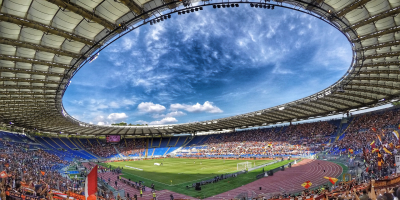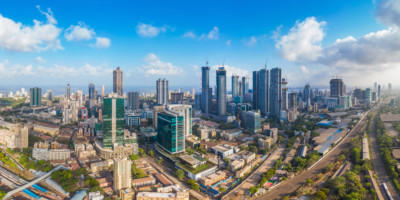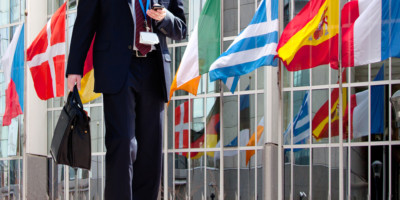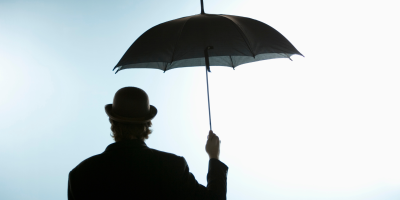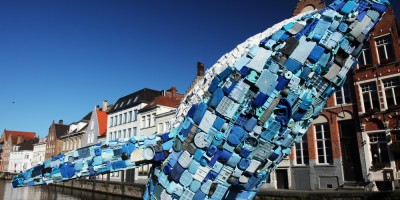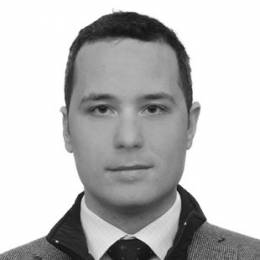-
Germania
Germany – Product Placement and Influencer Marketing
28 Novembre 2017
- Contratti
- Media
- Marchi e brevetti
Talking to clients five years ago the trend was clear, application was to be filed for the EU Trademark only, as it was faster, broader, in relation to the geographical scope cheaper and easier to handle. However as we experience now the EU trade mark has some downsides for which reason it is advisable to apply for a national trademark alongside the EU trade mark. And these are the reasons why:
Genuine Use
One of the main risks with trade marks is the fact that they must be used five years after registration. That use however must be genuine. According to the ECJ (C 149/11) “there is ‘genuine use’ of a trade mark where the mark is used in accordance with its essential function, which is to guarantee the identity of the origin of the goods or services for which it is registered, in order to create or preserve an outlet for those goods or services; genuine use does not include token use for the sole purpose of preserving the rights conferred by the mark. When assessing whether use of the trade mark is genuine, regard must be had to all the facts and circumstances relevant to establishing whether there is real commercial exploitation of the mark in the course of trade, particularly the usages regarded as warranted in the economic sector concerned as a means of maintaining or creating market share for the goods or services protected by the mark, the nature of those goods or services, the characteristics of the market and the scale and frequency of use of the mark.“
The problem which occurs from time to time is whether a trade mark used only in one member state or in a specific part of that member state is to be regarded as genuine use in the meaning of these ECJ findings. Whilst the ECJ (C 149/11) has not denied genuine use because of a territorial restricted use within one member state per se it still has not excluded that possibility and what is more has even given the national courts the decision making authority to assess “whether the mark in question is used in accordance with its essential function and for the purpose of creating or maintaining market share for the goods or services protected.“ Consequently a French court could decide that a use of a mark in Germany is insufficient for upholding a EU trade mark and thereby decide that the mark has to be deregistered. This reason alone provides for the necessity to have a national trade mark as plan B.
Counterclaim
When the plaintiff’s trade mark is a German trade mark, there is no possibility for the defendant to raise a counterclaim calling for a revocation of that plaintiff’s trade mark. The defendant has to file for an additional cancellation order before the German Patent and Trademark office. That additional cancellation proceeding however in general does not even bar the violation proceedings. So these will often be decided long before the cancellation proceedings in the last instance.
That is different when it comes to the EU trade mark. The EU trade mark can be declared void during (!) the violation proceedings by filing a counterclaim. Alternatively, the EU trade mark court hearing a counterclaim for revocation or for a declaration of invalidity may stay the proceedings on application by the proprietor of the EU trade mark and after hearing the other parties and may request the defendant to submit an application for revocation or for a declaration of invalidity to the Office. With the consequences that the violation proceeding is dead for ten years which it takes to pursue the cancellation proceedings through all instances.
Place of jurisdiction
The place of jurisdiction of a EU trade mark is limited to the place where the event which gave rise to the harm occurred (“Handlungsort”). The German trade mark however also provides for the place where the harm arose (‘Erfolgsort’) as place of jurisdiction. That however gives the plaintiff much more possibility to forum shop.
Statute of limitation
The EU trade mark does not provide a uniform statute of limitation. The ECJ (C 479/12) has decided that claims for injunctive reliefs become time-bared under the regulations of the national law. However in some case it can be very unclear which national law applies and therefore the same case can be seen differently in the different countries. When the plaintiff’s trade mark is a national trade mark the scope of application of the national statutes of limitation is clear and there are no further insecurities which are never to relish when have court proceedings.
The author of this post is Ilja Czernik.
Influencer marketing is the trend in today’s world of advertising. Even though it is obvious that influencer marketing must observe the framework of applicable statutory provisions, the market has long been uncertain about how influencer posts are to be drafted in order to be legally compliant. The current decision of Celle Higher Regional Court (June 08, 2017 – Case 13 U 53/17) offers at least some clarity.
The judgment was issued in relation to an action for injunction by the German Association for Social Competition (Verband Sozialer Wettbewerb) against a German drugstore chain. A 20-year-old Instagram star with 1.3 million followers had advertised the drugstore chain in one of her posts. The post was only marked as advertisement at the bottom with the hashtag “#ad,” which additionally only came second in a list of six hashtags.
Celle Higher Regional Court adjudged that this type of marking was insufficient. The court requested that the commercial purpose of an Instagram post would have to be apparent at first sight. It did not consider use of the hashtag “#ad” in a “hashtag cloud” to be sufficient to mark the post as advertising.
The court left expressly open, however, whether the use of the hashtag “#ad” is generally suitable to mark advertising posts.
The state media authorities (Landesmedienanstalten) already reacted to the judgment, however, and revised their joint guide on advertising issues in social media. It now reads: “When marking a post as PROMOTION (Werbung) or ADVERTISING (Anzeige), you will be on the safe side – that much is certain. […] At the current time, we cannot recommend marking posts as #ad, #sponsored by, or #powered by.” In the future, Instagram itself intends to provide for more transparency on the platform by comprehensibly identifying advertising posts. It is currently testing the introduction of a branded content tool in Germany to make it easier for users to recognize posts as paid advertising.
Practical tip
Advertising posts in social media should always be marked as “promotion” or “advertising” at the beginning of the posts unless their commercial purpose arises directly from the circumstances. Advertisers are also advised to obligate influencers contractually to such legally compliant marking of posts, since the influencers’ behavior may be attributed to the company, as is clearly shown by the recent judgment of Celle Higher Regional Court against the drugstore chain.
The author of this post is Ilja Czernik.
How are piracy and/or counterfeiting defined?
Under the existing legal framework piracy and counterfeiting are not identical terms. Piracy on the one hand, is used in order to describe the infringement of copyright protected works such as music, audiovisual works, computer programs, publications and radio/television broadcasts, literary works, etc., through acts such as the unauthorized reproduction, broadcasting, distribution and sale of non-authorized copies of such works.
Counterfeiting on the other hand, is defined as the practice of manufacturing, importing/ exporting, distributing, selling or otherwise dealing in goods, which are often of inferior quality, on which a trademark, that is identical to a registered trademark, has been placed without the authorization of the rightful trademark owner. Genuine products, on which the trademark of the right holder is placed, contrary to his intention to place them on the market as no-name products, also qualify as counterfeits. Counterfeits are most commonly called “fake goods” or “knock-offs.”
Counterfeiting is also used in order to describe the copying, imitating or using of a registered industrial design.
What is the legal framework against piracy and counterfeiting?
Anti-piracy and anti-counterfeiting provisions are to be found dispersed in various bodies of law, the most important of which are the following:
- Trademark Law 4072/2012, articles 121-183 of which regulate the use of registered trademarks and sets out the conditions on which a rightful owner may take action against counterfeiters. The Law also contains special criminal provisions.
- Copyright Law 2121/1993 which protects works such as music, audiovisual works, computer programs, publications and radio/television broadcasts, literary works. Special criminal provisions are included as well.
- Presidential Decree 259/1997 on Industrial Designs along with Law 2417/1996 on the implementation of The Hague Convention regarding the international registration of industrial designs
- The Unfair Competition Law 146/1914 which prohibits any use by an undertaking of a competitor’s trade names, company names, distinctive titles, unregistered trademarks, in the course of trade.
- Regulation 608/2013, concerning customs enforcement of intellectual property rights.
- Law 3377/2005 on the Sanitation of Trade which regulates the seizure and destruction of pirated or counterfeit goods.
What is the protection afforded to rights holders?
For a copyright protected work, its creator/author has the absolute discretion, power and control to decide how to commercially exploit it but also to prohibit any act that infringes such rights.
A trademark owner enjoys the exclusive right to affix the sign to the goods and/or their packaging, to place the goods on the market, to import or export the goods etc. At the same time, he is entitled to prevent all third parties not having his consent from using in the course of trade any sign which is identical to his registered trademark and also to prohibit the mere transit through Greek territory of counterfeit products that have another country as their final destination or the mere import for the purpose of re-export of such products.
In turn, the owner of a registered design has the exclusive right to use it and to prevent all third parties not having his consent from using it. The construction, manufacturing, placing on the market, import, export or use of the product on which the design has been placed or applied, as well as the storing of the product are all acts that fall under the prohibition.
What is the recourse available against counterfeiting and piracy?
Both, piracy and counterfeiting are prohibited and punishable by both civil and criminal law. Generally, copyright holders and trademark /design owners can sue pirates and counterfeiters in civil courts and seek provisional injunctions, whereas the authorities can use the respective criminal provisions in order to sue counterfeiters in criminal courts.
What measures are available prior to the counterfeit/pirated goods entering the country?
Counterfeit/pirated goods’ seizures by the customs authorities are the result of either random, routine, sampling checks or of targeted actions initiated by the customs authorities in case valid suspicions regarding the infringement of IP rights exists.
If an application for intervention has been filed prior to the identification of infringing goods, the appointed representative of the rights holder will be contacted (in the context of the Customs monitoring process laid out by Regulation 608/2013), once suspicious goods have been found. If no application has been filed, then the authorities will contact any person or entity (e.g. rightsholder) entitled to submit such an application and inform them of the alleged infringement.
How does the process work?
Once the customs authorities have identified goods suspected of infringing an IPR covered by a decision granting an application, they shall suspend the release of the goods or detain them and inform the declarant or the holder of the goods, about the suspension of the release of the goods within one working day. At the same time they shall notify the rights holder. If no application has yet been filed then the customs authorities shall notify persons or entities entitled to submit an application concerning the alleged infringement of the IPRs.
Do customs authorities have the power to destroy counterfeit/pirated goods?
The customs authorities may proceed to the destruction of the goods, without the need to determine whether they infringe an IPR, under the condition that the rightsholder confirms within 10 days (3 days in the case of perishable goods), in writing that he believes an IPR is being infringed and that he agrees to the destruction of the goods. If such confirmations are not submitted, then the goods will be released, unless a procedure for the determination if an IPR has been infringed has been initiated. Moreover, the declarant or the holder of the goods has to confirm within 10 days, his agreement to the destruction of the goods. The goods will be destroyed provided that both the rights holder and the declarant or the holder of the goods, grant their consents. In case such consent is not given, then the holder of the decision must initiate proceedings in order to ascertain whether an IPR has been infringed.
What remedies are available once the counterfeit/pirated goods have been put on the market?
Counterfeit/pirated goods that have already been put on the market may be seized and destroyed by the Customs authorities, the Police, the Municipal Police, the Financial and Economic Crime Unit (SDOE) of the Ministry of Finance, or the Coastguard. In practice this occurs either following the respective request by a rights holder or as a result of random checks conducted on the markets. The authorities have extensive powers and may carry out random on-site inspections in open-air markets, warehouses, stores and storage facilities. For example, they may seize and destroy on the spot, goods that are suspected of being counterfeits/pirated by any means available (e.g. by disposing them in a garbage truck or tainting them with spray paint) provided that the holder of the goods does not object.
What is the process in order to destroy on the spot, counterfeit goods?
In order for the goods to be destroyed on the spot, the main requirement is that the holder of the goods does not object. Should this be the case, then he has the right to file a written objection, while being granted a deadline in order to prove that the goods are genuine/non-infringing. In the meantime, the authorities will also inform the rightsholder who will have 10 days in order to confirm that the products are indeed counterfeit/pirated. If such a positive statement is given then the alleged infringer will be given an additional period of 3 days in order to oppose such statement, following which the rights holder will have an additional 10-day term in order to file a claim with the competent courts whereas if he fails to do so, the seizure will be lifted and the goods will be released.
Are there more specific rules for copyright infringements?
Especially for copyright protected works, the Financial Police (SDOE), the Police, the Coastguard and the Customs authorities are empowered to fine any person who illegally reproduces, sells or otherwise distributes to the public or possesses with the purpose of distributing a computer program. This includes street vendors, standing persons (outside of shops), or vendors inside of shops.
What legal actions can the right holder take against the infringer?
Rights holders have civil remedies against the infringers if they wish to initiate legal proceedings before the courts in order to claim damages or to obtain judgments in order to prevent future infringements by the same infringers. In fact, for infringements that concern identical marks being used for identical products, the plaintiff only has to provide the Court with the registration certificate of the trademark which will be sufficient to prove the infringement.
Other remedies include:
- cessation of the infringement
- its omission in the future
- the payment of damages
- the seizure of the goods and their removal from the market (at the expense of the infringer),
- the removal of materials and implements principally used in the creation or for the manufacturing of the said goods
- the destruction of the infringing goods
- the publication of the court’s decision in the media
These remedies may also be ordered against intermediaries whose services are used in order to infringe the plaintiff’s rights.
Is provisional judicial protection available?
In urgent cases where expedited action is called for, interim injunctions (injunctive relief), is also available. It is also possible to seek a provisional court order, in order to proceed with the provisional seizure of the infringing goods prior to them being distributed. In cases where any delay could cause irreparable damage to the interests of the rights holder (trademarks as well as copyright) then the interim injunction may be obtained ex parte.
Can damages be claimed and how are they calculated?
In trademark infringement matters, rightsholders may indeed seek damages and may claim the amount that the infringer would have paid for royalties, had he been granted a license. If damages are not calculated on this basis then, the factors that are taken into account by the court, include among other things, the negative economic effects the infringement has for the rights holder, the loss of profits and any benefits enjoyed by the infringer. If it is established that the infringer had no liability (i.e., if it was not for him possible or he could not have known that he was committing an infringement) the profits or benefits gained by the infringer, are payable to the rights holder.
For copyright infringements, damages cannot be less than twice of the legally required or normally payable remuneration the rights holder would have received if a license had been granted. Damages can be claimed irrespective of whether the infringement has been made intentionally or by negligence.
Is it possible to ask the court to order the infringers to provide more information on the network?
Indeed, it is possible, either in the process of an ongoing trial or following a petition for an interim injunction, for the court to order the infringer to provide information regarding the origin of the products and the distribution networks used. The same may be ordered also against anyone:
- found to illegally possess the infringing goods,
- found to possess such goods on a commercial scale,
- found to provide services that facilitate the infringement of a trademark
- or anyone who was indicated by one of the aforementioned persons as being actively involved in the production, manufacturing or distribution of counterfeit goods.
The information to be disclosed include, the full names and the addresses of the producers, manufacturers, distributors, suppliers and other previous possessors of the goods, as well as recipients, wholesale traders etc, information on the quantities of the counterfeit goods and their price.
Is criminal prosecution available?
Both piracy and counterfeiting (designs excluded) are criminal offenses and the respective laws contain provisions that make their prosecution possible. Other, general criminal law provisions, such as those for forgery or fraud may also be applicable depending on the facts of each case. However, in order for the authorities to initiate an investigation regarding counterfeiting (trademark infringement), a criminal complaint has to be filed by the rightsholder, within three (3) months from the day on which he became aware of the infringement. In contrast, in cases of piracy (copyright infringement) authorities can launch the investigation without the need for a criminal complaint having been filed by the rights holder. In both cases however, in order for the infringer to be prosecuted the investigation will have to establish that the infringement was indeed intentional.
What sentences do the infringers face?
Counterfeiters face strict criminal penalties for trademark infringement, which includes a minimum imprisonment term of six months and a minimum fine of 6.000 €. In instances where profits arise or damages occur, on a commercial or professional scale, stricter penalties which include a minimum of two years’ imprisonment and a fine between 6.000 to 30.000 € are applicable. Intermediaries, such as distributors, importers, holders or exporters of infringing goods, also face criminal prosecution.
Copyright infringers face imprisonment of up to one year and a fine ranging from 2.900 to 15.000 €. Provided that aggravating factors exist, imprisonment may be increased to 10 years and the fine to 34.075 €.
Is it possible to take action against counterfeiting and piracy over the Internet?
For infringements that occur through the internet, rightsholders have the right to request the blocking of access to websites that promote illegal content. Copyright holders in particular, may also apply for an injunction against intermediaries (ISPs) who facilitate access to third party infringers such as websites that are used for the dissemination of music and films.
Trademark or design holders may also take action against on-line marketplaces offering counterfeit goods, requesting for instance the blocking of the website’s accessibility in Greece.
This post is the last of three small articles on the protection of IP rights in Germany. In the first we have already seen how the German Copyright Act protects creative and artistic works and how Design Patents protects achievements in the aesthetic field. In the second we focused the attention on Trademarks, Patents and Utility Patents, in order to verify how to best protect names, signs and technical inventions.
In this post we will concentrate on how the Act against Unfair Competition grants protection against unfair practices in the course of the business and the main procedural aspects of the IP claims in Germany.
Unfair Competition Law
The Act against Unfair Competition outlaws unfair practices in the course of business by a respective general clause. A number of specific practices are explicitly listed in the Act, in particular misleading advertising and other deceptive practices, psychological pressure, destructive competition and the unfair exploitation of work results (but only under special circumstances). The breach of law can also constitute an unfair practice, provided that the practice is aimed at gaining an unlawful advantage over competitors.
Unfair practices are not controlled by a state authority, but can be prosecuted by any competitor. In addition, private associations which exist for the promotion of commercial or of independent professional interests and qualified entities that are entered on a list of the Injunctions Act or on a list of the EU Commission for the protection of consumer interests may prosecute unfair practices.
Unfair Competition Law is partly harmonized within the EU by a Directive dealing with unfair practices against customers.
Procedural aspects
In German practice, most of the unfair competition and intellectual property claims follow the same pattern:
In case of a suspected infringement, the claimant usually sends a warning letter to the violating party, asking for a cease and desist statement that must be enforceable by a contractual penalty. If the allegation is true, the violating party has to bear the lawyer’s costs for the warning letter.
If the violating party refuses such a statement, the claimant can apply for a temporary injunction. Such an injunction will be granted by the court if the claimant can establish the claim and the urgency of the matter. In practice, the urgency is assumed, if the application has been filed within a short time frame after the applicant became aware of all relevant facts. However, there is no statutory time limit. Some courts deny urgency after more than one month, while other courts consider two months or even more as acceptable.
The addressee of a warning letter should always check the legal allegations and react within the time limit given, otherwise the risk of a temporary injunction without oral hearing is comparatively high. Such a court decision can be very detrimental, as most of unfair competition and intellectual property claims are finally decided or settled in injunctive proceedings.
If a temporary injunction is granted and the violating party does not appeal against the judgement, the claimant usually asks for a termination letter. During this stage, the matter can be settled, otherwise a regular lawsuit will follow.
While a temporary injunction is usually raised to prevent further infringements or the repetition of an unfair practice, the main proceedings can also cover remedy, damage, disclosure and account claims.
An important advantage for the plaintiff is his right to choose the venue. Usually he has the choice between the domicile or seat of the defendant and all places where the infringement or unfair practice has been committed. In particular in internet cases, this can be all over Germany.
Most of the German member states have established special courts and chambers for Intellectual Property and unfair Competition Law. Therefore the quality of decisions in this field of law is usually comparatively high.
In a previous post we outlined how the German Copyright Act protects creative and artistic works and how Design Patents protects achievements in the aesthetic field.
In this second of three posts on IP rights in Germany, we are going to focus the attention on Trademarks, Patents and Utility Patents, in order to verify how to best protect names, signs and technical inventions.
Trade marks
Trade marks identify products and services of an enterprise. By protecting such names and signs (such as words, letters, numbers, pictures, and even colours and sounds), the owner gets a monopoly on their use.
Protection is usually granted by the registration of the trade mark at the DPMA, but can also exist if a trade mark gets well known in the relevant market. There are some absolute grounds for refusal of the registration, the most important one being the lack of distinctiveness of the requested trade mark for the considered products and services. Trade marks which consist exclusively of signs or indications which may serve to designate the kind, quality, quantity, intended purpose, value, geographical origin or the time of production of the goods or of rendering of the service, or other characteristics of the goods or service, and trade marks which consist exclusively of signs or indications which have become customary in the current language or in the bona fide and established practices of the trade shall not be registered. But the office will not check on their own, if the new trade mark infringes trade marks of others. It is up to the owner of an older trade mark to challenge the new registration. However, the older trade mark can only attack the new application, if the older mark has been used in business within the last five years.
Registrations must be filed on a special form issued by the DPMA. It is important to include the list of goods and services for which the protection is sought. The exact fee for the application depends on the number of classes of such goods and services, starting at € 290,00.
The registration at the DPMA covers only the use in Germany. The protection can be extended by a Community trademark for the use in the whole EU (application fee starting at € 850,00) or by an international registration at the WIPO (application fee depending also on the number of countries for which the protection shall be granted).
A registered trade mark can be renewed indefinitely and last forever. However, the registration will be cancelled, if the renewal fee (DPMA: starting at € 750,00) is not paid every ten years.
Before the launch of a new name or sign for a product or a service, we recommend to always check if the name violates existing trade marks of third parties. If this is not case, it is recommendable to think about the protection of the new name or sign by registering an own trade mark, choosing the register (Germany, EU, WIPO extension to other countries) by considering the intended geographic markets.
Trade mark owners can sell and assign their trade marks to third persons. The owner of a trade mark can also grant others a right of use of the trade mark.
The Trademark Act also recognizes the protection of commercial designations, such as company symbols (names, firm names or special designations of business establishments or enterprises) and titles of works. These designations are not registered, but are protected by the use in the course of business.
Patents
Patents are granted for new technical inventions, giving the owner a monopoly for 20 years (starting from the date of the filing, under the condition of the payment of annual fees). The technical invention must be new, based on an inventive activity (requiring a high level of inventiveness) and susceptible of industrial use. It is not new if it has been described in any manner accessible to the public anywhere in the world before.
The most important part of the application is the publication of the invention. So other persons can challenge the validity of the patent on the one hand, and the patent can be a basis for further developments on the other hand.
Before filing an application for a patent, we recommend to always check if the publication of the invention can conflict with a business interests that may require secrecy, in order to avoid the raising of a dispute.
Patents granted by the DPMA are only valid in Germany. It is also possible to apply for a patent at the European Patent Office in Munich. It is also possible to file an international patent application under the Patent Cooperation Treaty. The advantage of such an international application is that there is only one application for more than one country. However, the application will be examined and the patent will be granted by the national patent offices of the countries which the inventor has selected for protection.
The patent holder can sell and transfer the patent. He can also keep the patent and grant licences to third parties.
Utility Patents and further technical protective rights
As the design patent is the small brother of the copyright, the utility patent is the small brother of the patent. The utility patent is also registered at the DPMA, but the substantive requirements for protection (novelty, inventive achievement and industrial application) are not examined during the registration procedure. The protection is granted up to ten years, but has to be renewed by paying maintenance fees after three, six and eight years. For the rest, utility patents and patents are very similar.
Utility patents granted by the DPMA are only valid in Germany. There is no EU utility patent and no international application for other countries. In some countries, utility patents are not recognized at all.
Finally, Germany acknowledges the statutory protection of semiconductor chip topographies and plant varieties.
German Law recognizes protection for certain creations of the mind and grants a set of exclusive rights for these creations. While the Copyright Act grants protection for works of literature, science and art without any further conditions, other intellectual property rights basically require a registration at the German Patent and Trademark Office (DPMA) or in an international register. Furthermore, the imitation of products not protected by intellectual property rights can violate the Act against Unfair Competition, which grants protection against any kind of unfair practice in the course of the business. Unfair competition lawsuits are very similar to lawsuits in the field of intellectual property law and usually follow the same pattern.
In this first post we will analyse the German Copyright Act, Neighbouring Rights and Design Patents. The next post will look into Trademarks, Patents and Utility Patents; while a third post will focus on the Act against Unfair Competition and the procedural aspects.
Copyrights and Neighbouring Rights
The German Copyright Act protects creative and artistic works, in particular linguistic works (for example books, speeches and software), musical works, works of pantomime including choreographic works, works of fine art including those of architecture, applied art and plans for such works, photographic works, films and illustrations of a scientific or technical nature. Ideas are not protected, as only the form of an individual and personal creation is the subject of copyright. The person who creates a work shall be deemed the author; several persons who have created a work jointly shall be deemed joint authors. As mentioned above, there is no registration of works, but in the case of anonymous or pseudonymous works the true name of the author can be submitted for entry in the Register of Authors at the DPMA.
Copyright shall protect the author with respect to his intellectual and personal relationship with his work on the one hand, and with respect to the utilization of his work on the other hand. The right of exploitation of the work can be licensed to third persons, but the copyright itself cannot be transferred to others (except by way of inheritance). Copyright expires 70 years after the author’s death.
The Copyright Acts grants also protection for economic efforts in relation to works. The so-called Neighbouring Rights cover for example the protection of the performer of a work, of the producer of an audio recording of a work, of broadcasting organizations and of the maker of a database
Germany has signed the most important international copyright conventions and therefore grants copyright protection to authors of the most states in the world, while these states also grant copyrights to German authors, based on the respective national law. Several European Union directives on special parts of copyright legislation have been implemented in Germany, but the harmonization within the EU does not yet cover the whole copyright system.
Design Patents
The design patent is the small brother of the copyright, because it also protects achievements in the aesthetic field. However, the German Design Patent Act grants only protection after the registration of the Design Patent at the DPMA. The design has to be new and needs an individual character. A design shall be considered new if no identical design has been made available to the public before the date of filing of the application for registration. It has an individual character if the overall impression it produces on the informed user differs from the overall impression produced on such a user by any design which has been made available to the public before the date of filing of the application. The protection is granted up to 25 years, but has to be renewed every five years by paying renewal fees.
The German design patent grants only protection for Germany. If the creator of an aesthetic form wants to exploit the design internationally, he can also apply for a European Design Patent at the European Office for Harmonization in the Internal Market for the EU or at the International Bureau of the World Intellectual Property Organization (WIPO). Newly, the European system even recognizes the protection of new designs that have not been registered, but only for three years since the design has been made available to the public.
Patent can be registered in Iran through an electronic application to the Iranian Intellectual Property Center of State Organization for Registration of Deeds and Properties. Iran regulations regarding this issue include Patents, Industrial Designs and Trademarks Registration Act (2008) and the Executive Regulation of Patent, Industrial Designs and Trademarks Registration Law (2009).
According to article 5 of the above mentioned Act, also Iran – as many other jurisdictions, such as Germany, Japan and EU – applies the First to File system.
Here below we are going to analyse the main steps of National Patent Registration: Application and Examination, Objection to Rejection, Inquiry and Registration or Rejection.
Application and Examination
The process of registration is mostly carried out electronically. The application is filed through the website of Iranian Intellectual Property Center.
The second step to register a Patent in Iran is the examination. Iranian regulations provide two types of examination regarding patent applications: Formal examination and Substantive examination.
After the classification made in accordance with the IPC (International Patent Classification), begins the formal examination of the application. At this stage, if the application information or appendices are incomplete, a notice of defects shall be issued by the Iranian registration authority and the applicant shall remove the defects and electronically submit all the correct information and appendices, within 30 days for the residents of Iran or 60 days for those residing overseas.
Once passed the formal examination, the registration authority has 6 months to verify that the application complies with the provisions of the abovementioned Executive Regulation. In the case that the patentability of the application is uncertain, a notice of conditional rejection shall be sent to the applicant, which shall submit the relevant reasons and documents in response to the patent rejection notice.
On the contrary, if the patentability of the application is certain, a research will be conducted in the database of the Intellectual Property Center to verify if there is a similar Patent. If so, a declaration regarding the existence of similar records shall be issued and the applicant shall prepare a report which explains the differences between the two records. If the research results show an identical previous registration, a rejection notice will be issued.
Objection to Rejection
At this stage, if the applicant has an objection, he can submit the motivations and evidences in support of the application, only after having payed the fees for Commission. This latter shall investigate on the matter and issue an official decision, which can be challenged within 60 days for the residents in Iran and 120 days for those residing overseas.
Inquiry
Following the examinations and the eventual objection process, it is possible for the registration authority to carry out an inquiry from specialized authorities to help provide a better substantive examination that lasts at most three months.
Afterwards, the applicant should submit the response of the inquiry through the website. In this case, the next steps might differ based on the negative or affirmative result of the inquiry.
Registration or Rejection
If the inquiry is affirmative the acceptance notice shall be issued, the application shall be registered and the registration fees shall be paid by the applicant within 30 days for the residents of Iran and 60 days for those residing overseas. After having paid the fees, the registration notice will be issued and published within 30 days after registration in the official gazette and, at last, the patent certificate can be issued.
In the case that the inquiry is negative, a warning notice shall be issued before the definitive rejection. The applicant can submit some supplementary documents in order to integrate the application; otherwise the rejection notice shall be issued.
The author of this post is Mohammad Rahmani.
Greece – Piracy & Anti-Counterfeiting
14 Settembre 2017
-
Grecia
- Proprietà industriale e intellettuale
- Marchi e brevetti
Talking to clients five years ago the trend was clear, application was to be filed for the EU Trademark only, as it was faster, broader, in relation to the geographical scope cheaper and easier to handle. However as we experience now the EU trade mark has some downsides for which reason it is advisable to apply for a national trademark alongside the EU trade mark. And these are the reasons why:
Genuine Use
One of the main risks with trade marks is the fact that they must be used five years after registration. That use however must be genuine. According to the ECJ (C 149/11) “there is ‘genuine use’ of a trade mark where the mark is used in accordance with its essential function, which is to guarantee the identity of the origin of the goods or services for which it is registered, in order to create or preserve an outlet for those goods or services; genuine use does not include token use for the sole purpose of preserving the rights conferred by the mark. When assessing whether use of the trade mark is genuine, regard must be had to all the facts and circumstances relevant to establishing whether there is real commercial exploitation of the mark in the course of trade, particularly the usages regarded as warranted in the economic sector concerned as a means of maintaining or creating market share for the goods or services protected by the mark, the nature of those goods or services, the characteristics of the market and the scale and frequency of use of the mark.“
The problem which occurs from time to time is whether a trade mark used only in one member state or in a specific part of that member state is to be regarded as genuine use in the meaning of these ECJ findings. Whilst the ECJ (C 149/11) has not denied genuine use because of a territorial restricted use within one member state per se it still has not excluded that possibility and what is more has even given the national courts the decision making authority to assess “whether the mark in question is used in accordance with its essential function and for the purpose of creating or maintaining market share for the goods or services protected.“ Consequently a French court could decide that a use of a mark in Germany is insufficient for upholding a EU trade mark and thereby decide that the mark has to be deregistered. This reason alone provides for the necessity to have a national trade mark as plan B.
Counterclaim
When the plaintiff’s trade mark is a German trade mark, there is no possibility for the defendant to raise a counterclaim calling for a revocation of that plaintiff’s trade mark. The defendant has to file for an additional cancellation order before the German Patent and Trademark office. That additional cancellation proceeding however in general does not even bar the violation proceedings. So these will often be decided long before the cancellation proceedings in the last instance.
That is different when it comes to the EU trade mark. The EU trade mark can be declared void during (!) the violation proceedings by filing a counterclaim. Alternatively, the EU trade mark court hearing a counterclaim for revocation or for a declaration of invalidity may stay the proceedings on application by the proprietor of the EU trade mark and after hearing the other parties and may request the defendant to submit an application for revocation or for a declaration of invalidity to the Office. With the consequences that the violation proceeding is dead for ten years which it takes to pursue the cancellation proceedings through all instances.
Place of jurisdiction
The place of jurisdiction of a EU trade mark is limited to the place where the event which gave rise to the harm occurred (“Handlungsort”). The German trade mark however also provides for the place where the harm arose (‘Erfolgsort’) as place of jurisdiction. That however gives the plaintiff much more possibility to forum shop.
Statute of limitation
The EU trade mark does not provide a uniform statute of limitation. The ECJ (C 479/12) has decided that claims for injunctive reliefs become time-bared under the regulations of the national law. However in some case it can be very unclear which national law applies and therefore the same case can be seen differently in the different countries. When the plaintiff’s trade mark is a national trade mark the scope of application of the national statutes of limitation is clear and there are no further insecurities which are never to relish when have court proceedings.
The author of this post is Ilja Czernik.
Influencer marketing is the trend in today’s world of advertising. Even though it is obvious that influencer marketing must observe the framework of applicable statutory provisions, the market has long been uncertain about how influencer posts are to be drafted in order to be legally compliant. The current decision of Celle Higher Regional Court (June 08, 2017 – Case 13 U 53/17) offers at least some clarity.
The judgment was issued in relation to an action for injunction by the German Association for Social Competition (Verband Sozialer Wettbewerb) against a German drugstore chain. A 20-year-old Instagram star with 1.3 million followers had advertised the drugstore chain in one of her posts. The post was only marked as advertisement at the bottom with the hashtag “#ad,” which additionally only came second in a list of six hashtags.
Celle Higher Regional Court adjudged that this type of marking was insufficient. The court requested that the commercial purpose of an Instagram post would have to be apparent at first sight. It did not consider use of the hashtag “#ad” in a “hashtag cloud” to be sufficient to mark the post as advertising.
The court left expressly open, however, whether the use of the hashtag “#ad” is generally suitable to mark advertising posts.
The state media authorities (Landesmedienanstalten) already reacted to the judgment, however, and revised their joint guide on advertising issues in social media. It now reads: “When marking a post as PROMOTION (Werbung) or ADVERTISING (Anzeige), you will be on the safe side – that much is certain. […] At the current time, we cannot recommend marking posts as #ad, #sponsored by, or #powered by.” In the future, Instagram itself intends to provide for more transparency on the platform by comprehensibly identifying advertising posts. It is currently testing the introduction of a branded content tool in Germany to make it easier for users to recognize posts as paid advertising.
Practical tip
Advertising posts in social media should always be marked as “promotion” or “advertising” at the beginning of the posts unless their commercial purpose arises directly from the circumstances. Advertisers are also advised to obligate influencers contractually to such legally compliant marking of posts, since the influencers’ behavior may be attributed to the company, as is clearly shown by the recent judgment of Celle Higher Regional Court against the drugstore chain.
The author of this post is Ilja Czernik.
How are piracy and/or counterfeiting defined?
Under the existing legal framework piracy and counterfeiting are not identical terms. Piracy on the one hand, is used in order to describe the infringement of copyright protected works such as music, audiovisual works, computer programs, publications and radio/television broadcasts, literary works, etc., through acts such as the unauthorized reproduction, broadcasting, distribution and sale of non-authorized copies of such works.
Counterfeiting on the other hand, is defined as the practice of manufacturing, importing/ exporting, distributing, selling or otherwise dealing in goods, which are often of inferior quality, on which a trademark, that is identical to a registered trademark, has been placed without the authorization of the rightful trademark owner. Genuine products, on which the trademark of the right holder is placed, contrary to his intention to place them on the market as no-name products, also qualify as counterfeits. Counterfeits are most commonly called “fake goods” or “knock-offs.”
Counterfeiting is also used in order to describe the copying, imitating or using of a registered industrial design.
What is the legal framework against piracy and counterfeiting?
Anti-piracy and anti-counterfeiting provisions are to be found dispersed in various bodies of law, the most important of which are the following:
- Trademark Law 4072/2012, articles 121-183 of which regulate the use of registered trademarks and sets out the conditions on which a rightful owner may take action against counterfeiters. The Law also contains special criminal provisions.
- Copyright Law 2121/1993 which protects works such as music, audiovisual works, computer programs, publications and radio/television broadcasts, literary works. Special criminal provisions are included as well.
- Presidential Decree 259/1997 on Industrial Designs along with Law 2417/1996 on the implementation of The Hague Convention regarding the international registration of industrial designs
- The Unfair Competition Law 146/1914 which prohibits any use by an undertaking of a competitor’s trade names, company names, distinctive titles, unregistered trademarks, in the course of trade.
- Regulation 608/2013, concerning customs enforcement of intellectual property rights.
- Law 3377/2005 on the Sanitation of Trade which regulates the seizure and destruction of pirated or counterfeit goods.
What is the protection afforded to rights holders?
For a copyright protected work, its creator/author has the absolute discretion, power and control to decide how to commercially exploit it but also to prohibit any act that infringes such rights.
A trademark owner enjoys the exclusive right to affix the sign to the goods and/or their packaging, to place the goods on the market, to import or export the goods etc. At the same time, he is entitled to prevent all third parties not having his consent from using in the course of trade any sign which is identical to his registered trademark and also to prohibit the mere transit through Greek territory of counterfeit products that have another country as their final destination or the mere import for the purpose of re-export of such products.
In turn, the owner of a registered design has the exclusive right to use it and to prevent all third parties not having his consent from using it. The construction, manufacturing, placing on the market, import, export or use of the product on which the design has been placed or applied, as well as the storing of the product are all acts that fall under the prohibition.
What is the recourse available against counterfeiting and piracy?
Both, piracy and counterfeiting are prohibited and punishable by both civil and criminal law. Generally, copyright holders and trademark /design owners can sue pirates and counterfeiters in civil courts and seek provisional injunctions, whereas the authorities can use the respective criminal provisions in order to sue counterfeiters in criminal courts.
What measures are available prior to the counterfeit/pirated goods entering the country?
Counterfeit/pirated goods’ seizures by the customs authorities are the result of either random, routine, sampling checks or of targeted actions initiated by the customs authorities in case valid suspicions regarding the infringement of IP rights exists.
If an application for intervention has been filed prior to the identification of infringing goods, the appointed representative of the rights holder will be contacted (in the context of the Customs monitoring process laid out by Regulation 608/2013), once suspicious goods have been found. If no application has been filed, then the authorities will contact any person or entity (e.g. rightsholder) entitled to submit such an application and inform them of the alleged infringement.
How does the process work?
Once the customs authorities have identified goods suspected of infringing an IPR covered by a decision granting an application, they shall suspend the release of the goods or detain them and inform the declarant or the holder of the goods, about the suspension of the release of the goods within one working day. At the same time they shall notify the rights holder. If no application has yet been filed then the customs authorities shall notify persons or entities entitled to submit an application concerning the alleged infringement of the IPRs.
Do customs authorities have the power to destroy counterfeit/pirated goods?
The customs authorities may proceed to the destruction of the goods, without the need to determine whether they infringe an IPR, under the condition that the rightsholder confirms within 10 days (3 days in the case of perishable goods), in writing that he believes an IPR is being infringed and that he agrees to the destruction of the goods. If such confirmations are not submitted, then the goods will be released, unless a procedure for the determination if an IPR has been infringed has been initiated. Moreover, the declarant or the holder of the goods has to confirm within 10 days, his agreement to the destruction of the goods. The goods will be destroyed provided that both the rights holder and the declarant or the holder of the goods, grant their consents. In case such consent is not given, then the holder of the decision must initiate proceedings in order to ascertain whether an IPR has been infringed.
What remedies are available once the counterfeit/pirated goods have been put on the market?
Counterfeit/pirated goods that have already been put on the market may be seized and destroyed by the Customs authorities, the Police, the Municipal Police, the Financial and Economic Crime Unit (SDOE) of the Ministry of Finance, or the Coastguard. In practice this occurs either following the respective request by a rights holder or as a result of random checks conducted on the markets. The authorities have extensive powers and may carry out random on-site inspections in open-air markets, warehouses, stores and storage facilities. For example, they may seize and destroy on the spot, goods that are suspected of being counterfeits/pirated by any means available (e.g. by disposing them in a garbage truck or tainting them with spray paint) provided that the holder of the goods does not object.
What is the process in order to destroy on the spot, counterfeit goods?
In order for the goods to be destroyed on the spot, the main requirement is that the holder of the goods does not object. Should this be the case, then he has the right to file a written objection, while being granted a deadline in order to prove that the goods are genuine/non-infringing. In the meantime, the authorities will also inform the rightsholder who will have 10 days in order to confirm that the products are indeed counterfeit/pirated. If such a positive statement is given then the alleged infringer will be given an additional period of 3 days in order to oppose such statement, following which the rights holder will have an additional 10-day term in order to file a claim with the competent courts whereas if he fails to do so, the seizure will be lifted and the goods will be released.
Are there more specific rules for copyright infringements?
Especially for copyright protected works, the Financial Police (SDOE), the Police, the Coastguard and the Customs authorities are empowered to fine any person who illegally reproduces, sells or otherwise distributes to the public or possesses with the purpose of distributing a computer program. This includes street vendors, standing persons (outside of shops), or vendors inside of shops.
What legal actions can the right holder take against the infringer?
Rights holders have civil remedies against the infringers if they wish to initiate legal proceedings before the courts in order to claim damages or to obtain judgments in order to prevent future infringements by the same infringers. In fact, for infringements that concern identical marks being used for identical products, the plaintiff only has to provide the Court with the registration certificate of the trademark which will be sufficient to prove the infringement.
Other remedies include:
- cessation of the infringement
- its omission in the future
- the payment of damages
- the seizure of the goods and their removal from the market (at the expense of the infringer),
- the removal of materials and implements principally used in the creation or for the manufacturing of the said goods
- the destruction of the infringing goods
- the publication of the court’s decision in the media
These remedies may also be ordered against intermediaries whose services are used in order to infringe the plaintiff’s rights.
Is provisional judicial protection available?
In urgent cases where expedited action is called for, interim injunctions (injunctive relief), is also available. It is also possible to seek a provisional court order, in order to proceed with the provisional seizure of the infringing goods prior to them being distributed. In cases where any delay could cause irreparable damage to the interests of the rights holder (trademarks as well as copyright) then the interim injunction may be obtained ex parte.
Can damages be claimed and how are they calculated?
In trademark infringement matters, rightsholders may indeed seek damages and may claim the amount that the infringer would have paid for royalties, had he been granted a license. If damages are not calculated on this basis then, the factors that are taken into account by the court, include among other things, the negative economic effects the infringement has for the rights holder, the loss of profits and any benefits enjoyed by the infringer. If it is established that the infringer had no liability (i.e., if it was not for him possible or he could not have known that he was committing an infringement) the profits or benefits gained by the infringer, are payable to the rights holder.
For copyright infringements, damages cannot be less than twice of the legally required or normally payable remuneration the rights holder would have received if a license had been granted. Damages can be claimed irrespective of whether the infringement has been made intentionally or by negligence.
Is it possible to ask the court to order the infringers to provide more information on the network?
Indeed, it is possible, either in the process of an ongoing trial or following a petition for an interim injunction, for the court to order the infringer to provide information regarding the origin of the products and the distribution networks used. The same may be ordered also against anyone:
- found to illegally possess the infringing goods,
- found to possess such goods on a commercial scale,
- found to provide services that facilitate the infringement of a trademark
- or anyone who was indicated by one of the aforementioned persons as being actively involved in the production, manufacturing or distribution of counterfeit goods.
The information to be disclosed include, the full names and the addresses of the producers, manufacturers, distributors, suppliers and other previous possessors of the goods, as well as recipients, wholesale traders etc, information on the quantities of the counterfeit goods and their price.
Is criminal prosecution available?
Both piracy and counterfeiting (designs excluded) are criminal offenses and the respective laws contain provisions that make their prosecution possible. Other, general criminal law provisions, such as those for forgery or fraud may also be applicable depending on the facts of each case. However, in order for the authorities to initiate an investigation regarding counterfeiting (trademark infringement), a criminal complaint has to be filed by the rightsholder, within three (3) months from the day on which he became aware of the infringement. In contrast, in cases of piracy (copyright infringement) authorities can launch the investigation without the need for a criminal complaint having been filed by the rights holder. In both cases however, in order for the infringer to be prosecuted the investigation will have to establish that the infringement was indeed intentional.
What sentences do the infringers face?
Counterfeiters face strict criminal penalties for trademark infringement, which includes a minimum imprisonment term of six months and a minimum fine of 6.000 €. In instances where profits arise or damages occur, on a commercial or professional scale, stricter penalties which include a minimum of two years’ imprisonment and a fine between 6.000 to 30.000 € are applicable. Intermediaries, such as distributors, importers, holders or exporters of infringing goods, also face criminal prosecution.
Copyright infringers face imprisonment of up to one year and a fine ranging from 2.900 to 15.000 €. Provided that aggravating factors exist, imprisonment may be increased to 10 years and the fine to 34.075 €.
Is it possible to take action against counterfeiting and piracy over the Internet?
For infringements that occur through the internet, rightsholders have the right to request the blocking of access to websites that promote illegal content. Copyright holders in particular, may also apply for an injunction against intermediaries (ISPs) who facilitate access to third party infringers such as websites that are used for the dissemination of music and films.
Trademark or design holders may also take action against on-line marketplaces offering counterfeit goods, requesting for instance the blocking of the website’s accessibility in Greece.
This post is the last of three small articles on the protection of IP rights in Germany. In the first we have already seen how the German Copyright Act protects creative and artistic works and how Design Patents protects achievements in the aesthetic field. In the second we focused the attention on Trademarks, Patents and Utility Patents, in order to verify how to best protect names, signs and technical inventions.
In this post we will concentrate on how the Act against Unfair Competition grants protection against unfair practices in the course of the business and the main procedural aspects of the IP claims in Germany.
Unfair Competition Law
The Act against Unfair Competition outlaws unfair practices in the course of business by a respective general clause. A number of specific practices are explicitly listed in the Act, in particular misleading advertising and other deceptive practices, psychological pressure, destructive competition and the unfair exploitation of work results (but only under special circumstances). The breach of law can also constitute an unfair practice, provided that the practice is aimed at gaining an unlawful advantage over competitors.
Unfair practices are not controlled by a state authority, but can be prosecuted by any competitor. In addition, private associations which exist for the promotion of commercial or of independent professional interests and qualified entities that are entered on a list of the Injunctions Act or on a list of the EU Commission for the protection of consumer interests may prosecute unfair practices.
Unfair Competition Law is partly harmonized within the EU by a Directive dealing with unfair practices against customers.
Procedural aspects
In German practice, most of the unfair competition and intellectual property claims follow the same pattern:
In case of a suspected infringement, the claimant usually sends a warning letter to the violating party, asking for a cease and desist statement that must be enforceable by a contractual penalty. If the allegation is true, the violating party has to bear the lawyer’s costs for the warning letter.
If the violating party refuses such a statement, the claimant can apply for a temporary injunction. Such an injunction will be granted by the court if the claimant can establish the claim and the urgency of the matter. In practice, the urgency is assumed, if the application has been filed within a short time frame after the applicant became aware of all relevant facts. However, there is no statutory time limit. Some courts deny urgency after more than one month, while other courts consider two months or even more as acceptable.
The addressee of a warning letter should always check the legal allegations and react within the time limit given, otherwise the risk of a temporary injunction without oral hearing is comparatively high. Such a court decision can be very detrimental, as most of unfair competition and intellectual property claims are finally decided or settled in injunctive proceedings.
If a temporary injunction is granted and the violating party does not appeal against the judgement, the claimant usually asks for a termination letter. During this stage, the matter can be settled, otherwise a regular lawsuit will follow.
While a temporary injunction is usually raised to prevent further infringements or the repetition of an unfair practice, the main proceedings can also cover remedy, damage, disclosure and account claims.
An important advantage for the plaintiff is his right to choose the venue. Usually he has the choice between the domicile or seat of the defendant and all places where the infringement or unfair practice has been committed. In particular in internet cases, this can be all over Germany.
Most of the German member states have established special courts and chambers for Intellectual Property and unfair Competition Law. Therefore the quality of decisions in this field of law is usually comparatively high.
In a previous post we outlined how the German Copyright Act protects creative and artistic works and how Design Patents protects achievements in the aesthetic field.
In this second of three posts on IP rights in Germany, we are going to focus the attention on Trademarks, Patents and Utility Patents, in order to verify how to best protect names, signs and technical inventions.
Trade marks
Trade marks identify products and services of an enterprise. By protecting such names and signs (such as words, letters, numbers, pictures, and even colours and sounds), the owner gets a monopoly on their use.
Protection is usually granted by the registration of the trade mark at the DPMA, but can also exist if a trade mark gets well known in the relevant market. There are some absolute grounds for refusal of the registration, the most important one being the lack of distinctiveness of the requested trade mark for the considered products and services. Trade marks which consist exclusively of signs or indications which may serve to designate the kind, quality, quantity, intended purpose, value, geographical origin or the time of production of the goods or of rendering of the service, or other characteristics of the goods or service, and trade marks which consist exclusively of signs or indications which have become customary in the current language or in the bona fide and established practices of the trade shall not be registered. But the office will not check on their own, if the new trade mark infringes trade marks of others. It is up to the owner of an older trade mark to challenge the new registration. However, the older trade mark can only attack the new application, if the older mark has been used in business within the last five years.
Registrations must be filed on a special form issued by the DPMA. It is important to include the list of goods and services for which the protection is sought. The exact fee for the application depends on the number of classes of such goods and services, starting at € 290,00.
The registration at the DPMA covers only the use in Germany. The protection can be extended by a Community trademark for the use in the whole EU (application fee starting at € 850,00) or by an international registration at the WIPO (application fee depending also on the number of countries for which the protection shall be granted).
A registered trade mark can be renewed indefinitely and last forever. However, the registration will be cancelled, if the renewal fee (DPMA: starting at € 750,00) is not paid every ten years.
Before the launch of a new name or sign for a product or a service, we recommend to always check if the name violates existing trade marks of third parties. If this is not case, it is recommendable to think about the protection of the new name or sign by registering an own trade mark, choosing the register (Germany, EU, WIPO extension to other countries) by considering the intended geographic markets.
Trade mark owners can sell and assign their trade marks to third persons. The owner of a trade mark can also grant others a right of use of the trade mark.
The Trademark Act also recognizes the protection of commercial designations, such as company symbols (names, firm names or special designations of business establishments or enterprises) and titles of works. These designations are not registered, but are protected by the use in the course of business.
Patents
Patents are granted for new technical inventions, giving the owner a monopoly for 20 years (starting from the date of the filing, under the condition of the payment of annual fees). The technical invention must be new, based on an inventive activity (requiring a high level of inventiveness) and susceptible of industrial use. It is not new if it has been described in any manner accessible to the public anywhere in the world before.
The most important part of the application is the publication of the invention. So other persons can challenge the validity of the patent on the one hand, and the patent can be a basis for further developments on the other hand.
Before filing an application for a patent, we recommend to always check if the publication of the invention can conflict with a business interests that may require secrecy, in order to avoid the raising of a dispute.
Patents granted by the DPMA are only valid in Germany. It is also possible to apply for a patent at the European Patent Office in Munich. It is also possible to file an international patent application under the Patent Cooperation Treaty. The advantage of such an international application is that there is only one application for more than one country. However, the application will be examined and the patent will be granted by the national patent offices of the countries which the inventor has selected for protection.
The patent holder can sell and transfer the patent. He can also keep the patent and grant licences to third parties.
Utility Patents and further technical protective rights
As the design patent is the small brother of the copyright, the utility patent is the small brother of the patent. The utility patent is also registered at the DPMA, but the substantive requirements for protection (novelty, inventive achievement and industrial application) are not examined during the registration procedure. The protection is granted up to ten years, but has to be renewed by paying maintenance fees after three, six and eight years. For the rest, utility patents and patents are very similar.
Utility patents granted by the DPMA are only valid in Germany. There is no EU utility patent and no international application for other countries. In some countries, utility patents are not recognized at all.
Finally, Germany acknowledges the statutory protection of semiconductor chip topographies and plant varieties.
German Law recognizes protection for certain creations of the mind and grants a set of exclusive rights for these creations. While the Copyright Act grants protection for works of literature, science and art without any further conditions, other intellectual property rights basically require a registration at the German Patent and Trademark Office (DPMA) or in an international register. Furthermore, the imitation of products not protected by intellectual property rights can violate the Act against Unfair Competition, which grants protection against any kind of unfair practice in the course of the business. Unfair competition lawsuits are very similar to lawsuits in the field of intellectual property law and usually follow the same pattern.
In this first post we will analyse the German Copyright Act, Neighbouring Rights and Design Patents. The next post will look into Trademarks, Patents and Utility Patents; while a third post will focus on the Act against Unfair Competition and the procedural aspects.
Copyrights and Neighbouring Rights
The German Copyright Act protects creative and artistic works, in particular linguistic works (for example books, speeches and software), musical works, works of pantomime including choreographic works, works of fine art including those of architecture, applied art and plans for such works, photographic works, films and illustrations of a scientific or technical nature. Ideas are not protected, as only the form of an individual and personal creation is the subject of copyright. The person who creates a work shall be deemed the author; several persons who have created a work jointly shall be deemed joint authors. As mentioned above, there is no registration of works, but in the case of anonymous or pseudonymous works the true name of the author can be submitted for entry in the Register of Authors at the DPMA.
Copyright shall protect the author with respect to his intellectual and personal relationship with his work on the one hand, and with respect to the utilization of his work on the other hand. The right of exploitation of the work can be licensed to third persons, but the copyright itself cannot be transferred to others (except by way of inheritance). Copyright expires 70 years after the author’s death.
The Copyright Acts grants also protection for economic efforts in relation to works. The so-called Neighbouring Rights cover for example the protection of the performer of a work, of the producer of an audio recording of a work, of broadcasting organizations and of the maker of a database
Germany has signed the most important international copyright conventions and therefore grants copyright protection to authors of the most states in the world, while these states also grant copyrights to German authors, based on the respective national law. Several European Union directives on special parts of copyright legislation have been implemented in Germany, but the harmonization within the EU does not yet cover the whole copyright system.
Design Patents
The design patent is the small brother of the copyright, because it also protects achievements in the aesthetic field. However, the German Design Patent Act grants only protection after the registration of the Design Patent at the DPMA. The design has to be new and needs an individual character. A design shall be considered new if no identical design has been made available to the public before the date of filing of the application for registration. It has an individual character if the overall impression it produces on the informed user differs from the overall impression produced on such a user by any design which has been made available to the public before the date of filing of the application. The protection is granted up to 25 years, but has to be renewed every five years by paying renewal fees.
The German design patent grants only protection for Germany. If the creator of an aesthetic form wants to exploit the design internationally, he can also apply for a European Design Patent at the European Office for Harmonization in the Internal Market for the EU or at the International Bureau of the World Intellectual Property Organization (WIPO). Newly, the European system even recognizes the protection of new designs that have not been registered, but only for three years since the design has been made available to the public.
Patent can be registered in Iran through an electronic application to the Iranian Intellectual Property Center of State Organization for Registration of Deeds and Properties. Iran regulations regarding this issue include Patents, Industrial Designs and Trademarks Registration Act (2008) and the Executive Regulation of Patent, Industrial Designs and Trademarks Registration Law (2009).
According to article 5 of the above mentioned Act, also Iran – as many other jurisdictions, such as Germany, Japan and EU – applies the First to File system.
Here below we are going to analyse the main steps of National Patent Registration: Application and Examination, Objection to Rejection, Inquiry and Registration or Rejection.
Application and Examination
The process of registration is mostly carried out electronically. The application is filed through the website of Iranian Intellectual Property Center.
The second step to register a Patent in Iran is the examination. Iranian regulations provide two types of examination regarding patent applications: Formal examination and Substantive examination.
After the classification made in accordance with the IPC (International Patent Classification), begins the formal examination of the application. At this stage, if the application information or appendices are incomplete, a notice of defects shall be issued by the Iranian registration authority and the applicant shall remove the defects and electronically submit all the correct information and appendices, within 30 days for the residents of Iran or 60 days for those residing overseas.
Once passed the formal examination, the registration authority has 6 months to verify that the application complies with the provisions of the abovementioned Executive Regulation. In the case that the patentability of the application is uncertain, a notice of conditional rejection shall be sent to the applicant, which shall submit the relevant reasons and documents in response to the patent rejection notice.
On the contrary, if the patentability of the application is certain, a research will be conducted in the database of the Intellectual Property Center to verify if there is a similar Patent. If so, a declaration regarding the existence of similar records shall be issued and the applicant shall prepare a report which explains the differences between the two records. If the research results show an identical previous registration, a rejection notice will be issued.
Objection to Rejection
At this stage, if the applicant has an objection, he can submit the motivations and evidences in support of the application, only after having payed the fees for Commission. This latter shall investigate on the matter and issue an official decision, which can be challenged within 60 days for the residents in Iran and 120 days for those residing overseas.
Inquiry
Following the examinations and the eventual objection process, it is possible for the registration authority to carry out an inquiry from specialized authorities to help provide a better substantive examination that lasts at most three months.
Afterwards, the applicant should submit the response of the inquiry through the website. In this case, the next steps might differ based on the negative or affirmative result of the inquiry.
Registration or Rejection
If the inquiry is affirmative the acceptance notice shall be issued, the application shall be registered and the registration fees shall be paid by the applicant within 30 days for the residents of Iran and 60 days for those residing overseas. After having paid the fees, the registration notice will be issued and published within 30 days after registration in the official gazette and, at last, the patent certificate can be issued.
In the case that the inquiry is negative, a warning notice shall be issued before the definitive rejection. The applicant can submit some supplementary documents in order to integrate the application; otherwise the rejection notice shall be issued.
The author of this post is Mohammad Rahmani.










